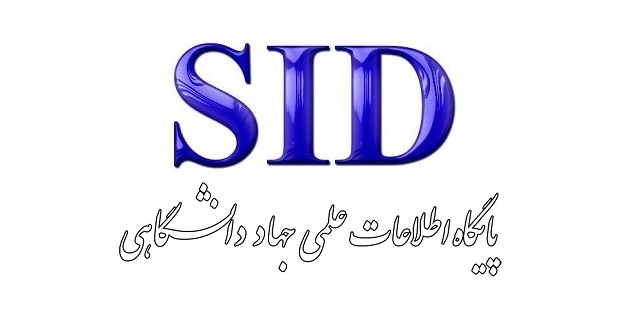Formulation and Fit of a Talent-Oriented Organizational Model in Social Security Using a Mixed-Method Technique
Keywords:
Talent-driven organization, social security, structural equation modeling Send feedback See dictionaryAbstract
In today’s competitive and complex environment, social security organizations require novel models for attracting and retaining talent that can create sustainable competitive advantages. In this regard, the use of mixed-method techniques and the development of a talent-oriented organizational model can lead to the identification and development of effective and sustainable solutions. The present study is applied in terms of its objective, and descriptive-survey in terms of data collection method. This dissertation employs a mixed-method research design (qualitative–quantitative). In this approach, both qualitative and quantitative methods are simultaneously used for data collection and analysis. The qualitative research population includes experts from the Social Security Organization, limited to 20 individuals from among the deputies and top-level executives. The quantitative research population consists of managers, staff, and other stakeholders of the Social Security Organization, who were selected randomly. The data were analyzed using MAXQDA and Smart PLS software. The findings of the study are presented in the form of a localized paradigmatic model, the validity, reliability, and fit of which have been confirmed. The research findings, aimed at improving methods and approaches to talent management in social security organizations, can contribute to identifying strategies for optimizing organizational performance and enhancing efficiency in addressing talent-related challenges.
Downloads
References
Caligiuri, P. M., Collings, D. G., De Cieri, H., & Lazarova, M. B. (2024). Global Talent Management: A Critical Review and Research Agenda for the New Organizational Reality. Annual Review of Organizational Psychology & Organizational Behavior, 11(1), 393-421. https://doi.org/10.1146/annurev-orgpsych-111821-033121
Chew, Y. C., & Mohamed Zainal, S. R. (2024). A Sustainable Collaborative Talent Management Through Collaborative Intelligence Mindset Theory: A Systematic Review. Sage Open, 14(2). https://doi.org/10.1177/21582440241261851
Collings, D. G., & Mellahi, K. (2009). Strategic Talent Management: A Review and Research Agenda. Human Resource Management Review, 19, 430-413. https://doi.org/10.1016/j.hrmr.2009.04.001
Jalalian Javadpour, F., Azadfada, S., Ashraf Ganjoui, F., & Safari, M. (2023). Developing a Talent Management Model in Racket Sports Using Grounded Theory. Research in Sports Management and Motor Behavior, 13(26), 31-56. https://doi.org/10.61186/JRSM.13.26.31
Khang, A. (2024). AI-Oriented Competency Framework for Talent Management in the Digital Economy Models, Technologies, Applications, and Implementation. https://doi.org/10.1201/9781003440901
Mahfozi, A., Lotfrooshan, D., & Ghorbani, M. (2018). Designing a Comprehensive Model of Talent Management with a Succession Approach to Enhance Organizational Productivity Using Structural Equation Method. Journal of Efficiency Management, 12(48), 249-275. https://www.sid.ir/paper/182111/fa
McDonnell, A., Collings, D. G., Mellahi, K., & Schuler, R. (2017). Talent Management: A Systematic Review and Future Prospects. European International Management, 11(1), 86-128. https://doi.org/10.1504/EJIM.2017.081253
Phillips, D. R., & Roper, K. O. (2009). A Framework for Talent Management in Real Estate. Journal of Corporate Real Estate, 11(1), 7-16. https://doi.org/10.1108/14630010910940525
Reiner, C., Meyer, S., & Sardadva, S. (2017). Urban Attraction Policies for International Academic Talent: Munich and Vienna in Comparison. Cities, 61, 27-35. https://doi.org/10.1016/j.cities.2016.10.010
Schiemann, W. A. (2013). From Talent Management to Talent Optimization. Journal of World Business, 49(2), 281-288. https://doi.org/10.1016/j.jwb.2013.11.012
Sireghani, S., Taheri Lari, M., & Bahramzadeh, H. A. (2023). Designing a Talent Management Model in the Specialized Parent Company of Thermal Power Generation. Quarterly Journal of Value Creation in Business Management, 3(3), 229-245. https://doi.org/10.22034/jvcbm.2023.408429.1150
Ulrich, D., & Smallwood, N. (2011). What is Talent? The RBL Group. https://onlinelibrary.wiley.com/doi/abs/10.1002/ltl.20011
van der Merwe, M., Nel, P., & Hoole, C. (2024). How Talent Management Execution Impacts Career Experiences: Exploring the Organization-Individual Intersect. Frontiers in psychology, 15, 1272645. https://doi.org/10.3389/fpsyg.2024.1272645
Downloads
Published
Submitted
Revised
Accepted
Issue
Section
License
Copyright (c) 2025 رشید ذوالفقاری زعفرانی, محمد نقی ایمانی , سیدمجتبی موسوی (نویسنده)

This work is licensed under a Creative Commons Attribution-NonCommercial 4.0 International License.








